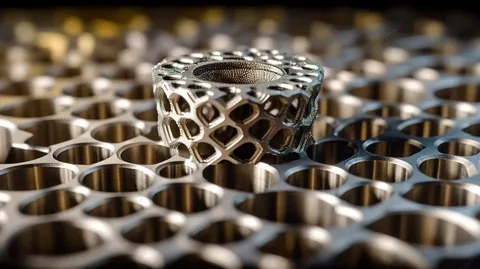Casting and Powder Metallurgy: Produce Your Product with High Precision
- mimsupplierus
- May 1
- 3 min read
Today, industries are using different manufacturing methods to create new products from raw materials to support every aspect of daily life. One such production method is casting. This manufacturing process was started around 7000 years ago. You will be surprised to know that this age-old method is still popular in so many industries due to its simple, efficient and cost-effective features. In this method, different materials are melted down and poured into molds to set. Engineers or technicians use casting process to make complex and detailed parts. It reduces production times and costs and simplifies assembly processes because extensive welding or joining is not needed. The parts that come out of the molds are ready for use. On the other hand, powder metallurgy method is different from it. This process produces highly accurate parts with precision. In this process, perfect components are made by pressing powdered metals and alloys into a rigid die under extreme pressure. The key to the accuracy and success of powder metallurgy is the use of sintering process that heats parts to bond nicely with the powder particles. Truly, Casting and Powder Metallurgy have made manufacturing process better and affordable.
Powder Metallurgy vs Casting and its Significance
Since ancient period, metal working has been done to produce new components or products. Over the years it has dramatically evolved and most importantly it is being used in industries such as aerospace, consumer, automotive and many more. Two important manufacturing methods that come into mind are Powder Metallurgy and Casting. These two methods are used to produce metal parts with specific mechanical properties. The processes, materials, capabilities and costs associated with Casting differ significantly from PM. If you take a look at Powder Metallurgy, you will find that powder metallurgy equipments are really expensive. Another point to note is that powder metallurgy mostly adopts fully automated processes, which greatly reduces labor costs. In comparison to casting, powder metallurgy offers high materials efficiency. Metal components are formed by pressing powder, with a high material utilization rate. Most castings process requires secondary processing to trim or machine away excess material.
A great benefit of Powder metallurgy components is that it can achieve very high dimensional accuracy, especially after the sizing process. Casting, particularly sand casting, usually has lower dimensional accuracy when you compare with powder metallurgy. PM products often have a more uniform microstructure, leading to consistent mechanical properties. But it is quite difficult to achieve optimal properties with casting process due to issues like segregation and porosity. Powder Metallurgy uses a wide range of materials such as Iron, Copper, Stainless steel, Nickel, Chromium, Manganese and more, whereas Casting uses nonferrous metals such as Zinc, copper, aluminium , iron and aluminium because these metals have low melting points.
Why choose XY-Global for Casting and Powder Metallurgy?
XY-Global is one of the most trusted and leading names in Casting, Powder Metallurgy, MIM and other manufacturing methods. For more than 15 years, they have excelled in producing superior quality Metal parts, customized metal powder metallurgy components and others with high precision and affordability. They have unmatched expertise, advanced technologies and a huge presence to deliver high performance solutions to their clients. They are known for delivering outstanding chemistry control, strength and density for a wide range of alloys. They start by listening to their customer needs and then analyze each application. This always results in thorough understanding of the project parameters. The final product delivered is of high precision and this makes X-Global standout in the market. For more information on Powder Metallurgy vs Casting, you can contact them.
Conclusion
Casting and powder metallurgy have become an important part of modern manufacturing process. These two methods have the ability to produce complex shapes, minimize waste, and enable material innovations which makes them essential tools in an engineer's armory. As industries are moving towards greater efficiency, sustainability, and personalization the importance of these methods will only grow with each passing year. Powder Metallurgy offers uniformity to improve product quality, shape and material flexibility, application versatility, and cost effectiveness. Casting provides broader material flexibility. Almost any metal or alloy that can be melted including aluminium, steel, bronze, and magnesium and then it can be cast. In the years to come, investment in research, education and process optimization, manufactures can harness the full potential of Casting and PM to drive technological and economic progress.




Comments